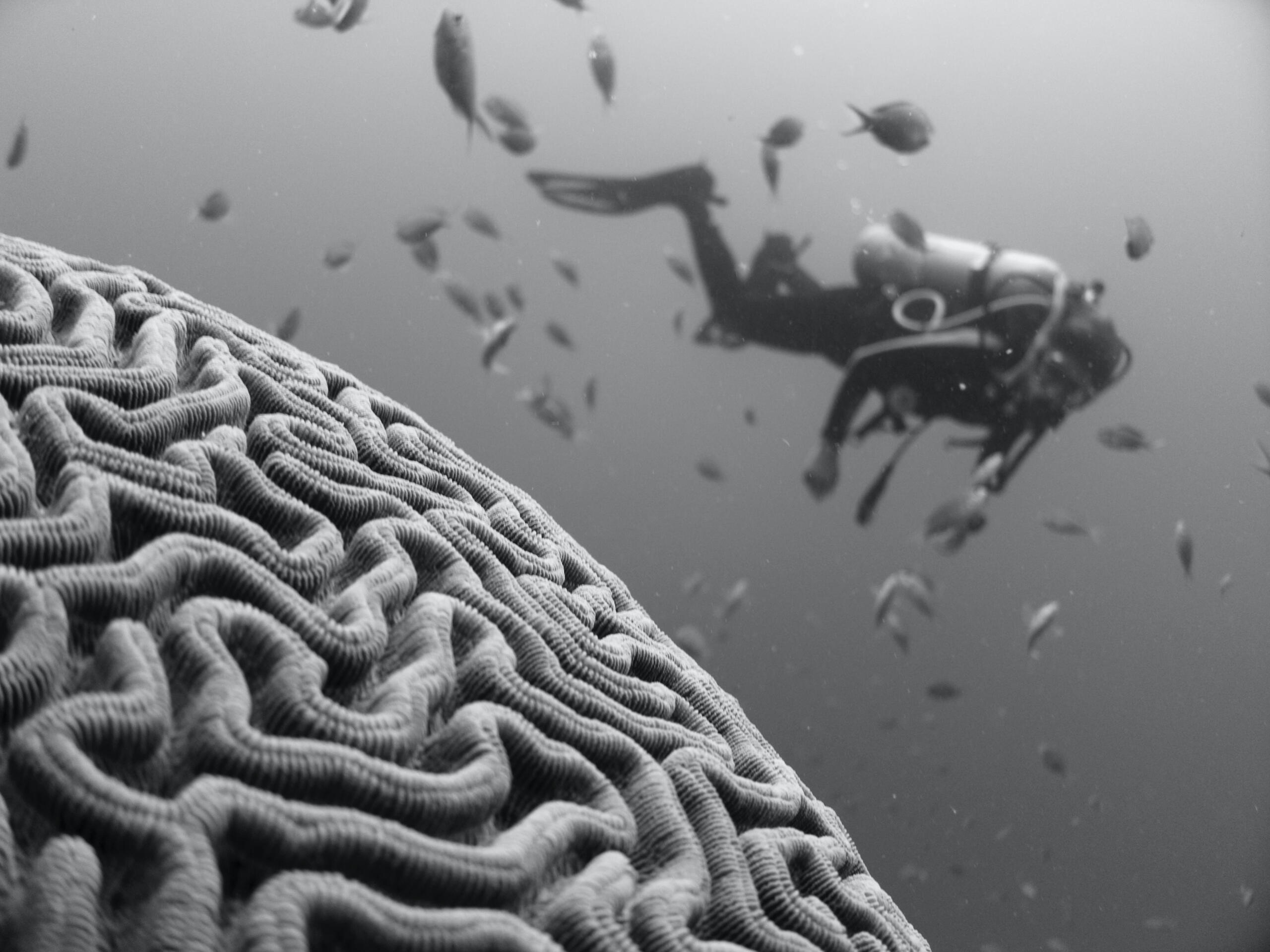Noopept.org
Noopept (also known as omberacetam) is the brand name for a health supplement used to support brain function.This compound is modeled after Piracetam — the first official nootropic ever discovered. It was made to offer the same cognitive-enhancing benefits but with a much smaller dose.Popular applications of Noopept include:
Improving focus & attention
Offering a protective action on the nerve cells
Promoting the balance of key neurotrophins
Boost memory and learning
Noopept is metabolized into a naturally-produced molecule in the brain called CPG (cycloprolylglycine).CPG is important for regulating executive function, as well as subconscious thought processes like memory storage and retrieval, spatial awareness, and emotional recall.In this guide, we’ll cover everything you need to know about Noopept and answer the following questions:
How does Noopept work
Is Noopept safe?
Is it legal?
What are the risks?

What is Noopept?
Noopept is a brand name for N-phenylacetyl-L-prolylglycine ethyl ester — a powerful cognitive enhancement compound.The proposed INN name for Noopept is Omberacetam due to its structural similarity to the racetam class of nootropics. This compound has similiar nootropic benefits to piracetam, aniracetam, and oxiracetam — but many times more potent.The average dose for Noopept is 10-30 mg — making it roughly 50 times more potent than piracetam.
Where Does Noopept Come From?
The name Noopept is the brand name for N-phenylacetyl-L-prolylglycine-ethyl-ester.Noopept was developed in 1997 as an improved version of the popular nootropic piracetam. It has a higher bioavailability and is able to cross the blood-brain barrier much more readily. This results in much more efficient effects from Noopept than any other racetam nootropic.The standard dose of piracetam is 1200 mg, while the same effects are produced from just 20 mg of Noopept.The Russian Academy of Medical Sciences has been testing oligopeptides like Noopet for decades. They were combining the amino acid proline (structural base for piracetam) with neuropeptides when they discovered GVS-111 (Noopept). This compound had the most dramatic improvement in neurological function, a very high-degree of safety, and exceptional bioavailability.Noopept is the brand name for N-phenylacetyl-L-prolylglycine-ethyl-ester. Once Noopept crosses the blood brain barrier it’s almost completely metabolized into CPG (cycloprolylglycine) which is a neuropeptide with powerful downstream effects on learning and memory.
The Benefits of Noopept
1. Improves memory
2. Increases creative workflow
3. Protects the brain from damage
4. Promotes flow-states
5. Increases mental acuity and awareness
6. May relieve anxiety and depression
7. Improve verbal fluidity and sociability

What is Noopept Used For?
Noopept is primarily used to boost cognitive function and make us sharper, faster, and more mentally energized.But Noopept has other uses too.One of the most common reasons for using Noopept is to preserve cognition. Omberacetam supports a system of neurotrophic factors in the brain that help resist age-related cognitive decline and help us recover from traumatic injuries much faster.The stimulating effects of Noopept are much milder than medications like Adderall or even caffeine — but provide a steady level of productive background mental energy.The subtle (but steady) improvement in mental energy provides ideal conditions to enter a flow state when working, studying, or creating.


Noopept Dosage
The standard dose of Noopept is 10 – 40 mg per day.Most Noopept capsules contain either 10 or 20 mg each — so the standard dose is 1–2 tablets per day. We recommend taking them in the morning along with some food.You can also find Noopept in raw powdered form. You can pre-fill your own capsules or mix with a smoothie in the mornings. This method is only recommended for experienced users to avoid getting the dose wrong.If using Noopept for the first time, start with the smallest dose (10 mg).Once you’re familiar with how it interacts with your body, you can increase the dose by 10 mg per day until you find a dose that works for you.Never exceed 40 mg of Noopept per day or use it for more than 60 days (2 months) in a row.
What to Expect After Taking Noopept
The effects of Noopept are felt almost immediately and last up to 7 hours.Within about 30 minutes of taking the nootropic, you’ll start to feel some mild stimulation. You’ll start feeling hypervigilant, focused, and may find it easy to enter a productive flow state.Noopept is subtle — meaning you’re not going to feel high. This nootropic merely heightens your level of awareness and makes it easier to enter productive flow states.The effects of Noopept will increase gradually over the course of about 2 hours, and peak around the 2-hour mark.The peak effects are often described as producing a feeling of intense focus, creativity, and alertness.The peak effects will last 2–3 hours before tapering off gradually.Though the short-term effects of Noopept are useful, most people report even greater benefits with repeated doses. Over the course of several weeks of use, the effects of Noopept become longer-lasting — improving memory, mental acuity, and focus.


Is Noopept Safe?
Noopept is considered non-toxic and safe — however, like any other pharmacologically-active substance, it comes with a few side effects when taken in high doses.As long as you remain within the recommended dosage of 10 to 40 mg per day, you’re unlikely to experience any major side effects.
Noopept Side-Effects
Fatigue
Headaches
Insomnia or sleep disruptions
Digestive upset (diarrhea or bloating)
The most common side effects of Noopept is insomnia and headaches.Insomnia is a result of the stimulating nature of Noopept. While this nootropic is much less stimulating than caffeine, it can still make it difficult to fall asleep at night. The easiest way to avoid this effect is to take Noopept earlier in the day, at least 8 hours before your intended bedtime.The second most common side-effect, headaches, is usually caused by a combination of dehydration and choline deficiencies caused by the effects of Noopept. To avoid this, make sure you drink plenty of water while using Noopept, and take a choline supplement (such as alpha-GPC) alongside the nootropic to avoid choline deficits.


Neuroplasticity & Noopept
Neuroplasticity is the ability for the brain to undergo biological changes and restructuring of the cells and synapses.Noopept is thought to encourage neuroplasticity to help recover from traumatic injury, improve learning and memory, and protect the brain from age-related cognitive decline.
1. Noopept for Memory
The most common application of Noopept is for improving memory. There are thousands of first-hand user accounts of people reporting dramatic improvements in memory after using Noopept, especially over long periods of time.Currently, there are only a small handful of studies investigating this effect through a medical lens.The first studies involved animal testing. One study done in 2008 found that rats given Noopept had a resistance to the effects of scopolamine and mecamylamine — which are two drugs used to induce amnesia [3]. Rats given 0.5 mg/kg (intraperitoneal) Noopept had significantly better scores than the control group after testing the spatial orientation and memory of the rats.This effect is thought to be the direct result of Noopept's ability to stimulate neurotrophic factors that control the release of acetylcholine in the brain — most notably nerve growth factor (NGF) and brain-derived neurotrophic factor (BDNF).Other studies have shown a protective effect on memory function in mice that have been exposed to other treatments designed to damage memory function:
Removal of olfactory bulbs [5]
Compression damage (concussion model) [6]
Stroke [7]
Cerebral hypoxia [8]
Oxidative stress [9]
Glutamate toxicity [10]
Frontal lobectomy [11]
Anticholinergic use [12]
2. Neuroprotective Effects of Noopept
Most of the recent research on Noopept has been focusing on its potential role as a neuroprotective agent for use following a stroke, traumatic injury or to prevent age-related cognitive decline.Noopept is thought to support age-related cognitive decline through the following mechanisms:
Reducing the toxic side effects of α-synuclein aggregates [13]
Increased immune reactivity to Aβ amyloid plaque found in Alzheimer’s disease patients [14]
Reduces the effects of hypoxia in the brain cells [8]
Increased activity of neurotrophic factors (NGF, BDNF)
3. Noopept & Brainwaves
Noopept has been shown to influence brainwave activity towards what experts consider the ideal range for the process of learning and creativity.Brain activity can be measured using a device called an electroencephalogram (EEG). These machines measure the electrical activity of the brain.EEG machines are used to detect brain function, diagnose medical conditions like brain cancer or epilepsy, and offer useful insight into the effects of various compounds during research.Brain waves are categorized by the frequency of electrical activity:
Gamma Waves (38 – 48 hz) — Considered “spare brain noise” happening at the upper-end of subconscious brain activity
Beta Waves (12 – 38 hz) — Most abundant frequency during waking states. Beta waves are predominant when we’re awake, alert, and engaged.
Alpha Waves (8 – 12 hz) — Alpha waves are associated with meditative states or deep, flow-state focus.
Theta Waves (3 – 8 hz) — Theta waves are common during the early stages of sleep. It’s thought to be a gateway to learning and memory and is most involved during dream states.
Delta Waves (0.5 – 3 hz) — This frequency is considered a deep, rhythmic brainwave state. It’s associated with very deep states of meditation and dreamless sleep.
Infra-Low (<0.5 hz) — These brainwaves are associated with our basic cortical rhythms that make up our higher brain function. Not much is known about these brainwaves and their origins.
The impact of Noopept has been studied with the help of EEG machines.Noopept has been shown to induce alpha and beta brainwave activity [15] to effectively boost focus, wakefulness, engagement, and overall productivity.
How Does Noopept Work?
Noopept works through a series of neurotrophic factors in the brain. Neurotrophic factors are tiny messenger molecules responsible for transmitting messages in the neurons to regulate their function.These neurotrophins are essential for maintaining ideal brain function, restoring lost nerve cells, and balancing neurotransmitter levels.Let’s explore each of the mechanisms of action for Noopept and related racetam nootropics.

A) Noopept Stimulates NGF
NGF stands for nerve growth factor — a neurotrophic factor that helps orchestrate the reproduction, regeneration, and maintenance of nerve cells in the central nervous system.NGF is associated with nerve cell recovery after an injury or stroke, neuroplasticity, long-term potentiation, and memory.Animal studies have shown that Noopept has the ability to increase NGF levels in the hippocampus [1].
B) Noopept Increases BDNF
BDNF stands for brain-derived neurotrophic factor — one of the primary neurotrophins in the brain [2].Animal studies from 2008 found that Noopept increased BDNF levels in the brain after 28 days of use [1]. This study also found that not only did Noopept not result in any tolerance during the 28-day study, but researchers also noted the neurotrophic effect improved over time — providing a greater rise in BDNF levels near the end of the study period.
C) Noopept Protects the Brain from Excess Glutamate
Glutamate is the most abundant neurotransmitter in the brain. It’s classified as a neuro-excitatory compound — which means it increases the likelihood of a neuron firing to transmit a signal to surrounding cells.When glutamate levels are high, electrical activity in the brain increases. Glutamate levels are highest when we’re awake and stimulated and are notably high during states of stress and anxiety — leading to excessive and chaotic electrical activity in the brain.In some cases, glutamate levels can rise to dangerous levels. For example, when the nerve cells are deprived of oxygen, such as after a stroke, or due to poor blood circulation in the brain, glutamate levels can rise to toxic levels.Noopept works to regulate glutamate levels in the brain — reducing the chances of excessive buildup during states of anxiety and protect the cells from glutamate-induced nerve cell death.Noopept regulates glutamate activity by modulating both the AMPA and NMDA receptors — both of which are tasked with regulating the way glutamate and calcium interacts with the brain.
D) Noopept Improves Acetylcholine Signalling
Acetylcholine is a key neurotransmitter in the brain associated with learning and memory. It’s one of the main neurotransmitters used to transmit signals from one region of the brain to another.Many nootropics target acetylcholine function due to its important role in learning and memory. One of the earliest signs of Alzheimer’s disease (characterized by reduced memory function) is a reduction in acetylcholine levels in the hippocampus of the brain. One of the main theories for the underlying cause of Alzheimer’s is a buildup of an acetylcholine metabolite known as beta-amyloid — which forms plaques in the nerve cells leading to their eventual destruction.Noopept has been shown to boost a compound called cycloprolylglycine (CPG) — which serves as a regulator for acetylcholine transmission in the synapses.CPG also has some involvement with the AMPA and NMDA receptors, which provides a secondary mechanism of action for Noopepts’ ability to help regulate other neurotransmitters such as glutamate.
Where to Buy Noopept
The regulations of Noopept can vary around the world. In Russia, where Noopept was first discovered, it’s listed as a prescription-only medication.In the United States and most of the rest of the world, Noopept is classified as a nutritional supplement — allowing you to buy it just about anywhere.
The nootropics Depot
The Nootropics Depot is the leading supplier of nootropic compounds in the United States.The online shop offers several dozen unique nootropic compounds, including the company’s own house brand of Noopept.→ Visit Nootropics Depot
Absorb Health
Absorb Health specializes in natural health products, but also carries popular nootropics like Noopept.This company offers some of the best prices on the market for raw nootropic powders.→ Visit Absorb Health
New Mind
New Mind is a subsidiary of Synaptent LLC — one of the leading suppliers of research chemicals in the world.This company is a popular choice for dozens of individual nootropics — both well-known and niche compounds — including Noopept.→ Visit New Mind
Pure Nootropics
Pure Nootropics is one of the oldest nootropic suppliers in the industry. The company was founded in 2013 when the concept of nootropics first started to take off.This company is focused on providing the highest-quality nootropics possible by providing extensive testing on its product lineup.→ Visit Pure Nootropics
Nootropics.com
Nootropics.com is run by Tee Barnett. This company is dedicated to creating a healthy culture around the use of nootropics.The company offers dozens of high-grade nootropic substances, including Noopept.→ Visit Nootropics.com
Other Nootropics to Stack With Noopept
Noopept is often taken alone but can also be combined with other nootropics for even greater benefit.Here are some of the most common supplements people are stacking alongside Noopept.

Choline Supplements
One of the primary mechanisms of action for Noopept is its regulatory effects on acetylcholine. This molecule is made from choline, which can become depleted over long study sessions or consistent Noopept consumption. This often results in headaches later on in the day and can negatively affect the cognitive enhancement benefits of Noopept.For this reason, the most popular nootropic to stack alongside Noopept are choline supplements.These supplements combine a carrier molecule to help the choline absorb through the intestines and blood-brain barrier with a source of pure choline.
Some of the best choline supplements include:
CDP Choline
Citicholine
Alpha-GPC
GABAergic Supplements
Nootropics that increase acetylcholine have a stimulating action with side effects similar to caffeine. This means the same sort of supplements that help counteract the stimulating side effects of caffeine may also help with Noopept or other acetylcholine supplements.Some of the best GABAergic supplements:
L-theanine
Chamomile extract
Kava
GABA
Valerian extract
Key Takeaways: Noopept
Noopept is a popular nootropic often used to enhance memory, focus, and resist cognitive decline. The effects of this nootropic primarily rely on the release of neurotrophic factors like NGF, BDNF, as well as glutamate receptors AMPA and NMDA.The dose of Noopept is between 10 and 40 mg per day, which can be taken as a capsule, or in raw-powdered form.Noopept is considered a safe and non-toxic nootropic — however, there are a few side effects to be aware of.The most common side effect is headaches, which can be eliminated by taking a choline supplement alongside your morning dose of Noopept. It’s also important to drink plenty of water throughout the day.
References
1. Ostrovskaya, R. U., Gudasheva, T. A., Zaplina, A. P., Vahitova, J. V., Salimgareeva, M. H., Jamidanov, R. S., & Seredenin, S. B. (2008). Noopept stimulates the expression of NGF and BDNF in rat hippocampus. Bulletin of experimental biology and medicine, 146(3), 334-337.
2. Park, H., & Poo, M. M. (2013). Neurotrophin regulation of neural circuit development and function. Nature Reviews Neuroscience, 14(1), 7-23.
3. Radionova, K. S., Belnik, A. P., & Ostrovskaya, R. U. (2008). Original nootropic drug Noopept prevents memory deficit in rats with muscarinic and nicotinic receptor blockade. Bulletin of experimental biology and medicine, 146(1), 59.
4. Neznamov, G. G., & Teleshova, E. S. (2009). Comparative studies of Noopept and piracetam in the treatment of patients with mild cognitive disorders in organic brain diseases of vascular and traumatic origin. Neuroscience and behavioral physiology, 39(3), 311.
5. Ostrovskaya, R. U., Gruden, M. A., Bobkova, N. A., Sewell, R. D., Gudasheva, T. A., Samokhin, A. N., … & Morozova-Roche, L. A. (2007). The nootropic and neuroprotective proline-containing dipeptide noopept restores spatial memory and increases immunoreactivity to amyloid in an Alzheimer’s disease model. Journal of psychopharmacology, 21(6), 611-619.
6. Romanova, G. A., Mirzoev, T. K., Barskov, I. V., Victorov, I. V., Gudasheva, T. A., & Ostrovskaya, R. U. (2000). Antiamnesic effect of acyl-prolyl-containing dipeptide (GVS-111) in compression-induced damage to frontal cortex. Bulletin of experimental biology and medicine, 130(9), 846-848.
7. Ostrovskaya, R. U., Romanova, G. A., Barskov, I. V., Shanina, E. V., Gudasheva, T. A., Victorov, I. V., … & Seredenin, S. B. (1999). Memory restoring and neuroprotective effects of the proline-containing dipeptide, GVS-111, in a photochemical stroke model. Behavioural pharmacology, 10(5), 549-553.
8. Andreeva, N. A., Stel’mashuk, E. V., Isaev, N. K., Ostrovskaya, R. U., Gudasheva, T. A., & Viktorov, I. V. (2000). Neuroprotective properties of nootropic dipeptide GVS-111 in in vitro oxygen-glucose deprivation, glutamate toxicity and oxidative stress. Bulletin of Experimental Biology and Medicine, 130(10), 969-972.
9. Pelsman, A., Hoyo-Vadillo, C., Gudasheva, T. A., Seredenin, S. B., Ostrovskaya, R. U., & Busciglio, J. (2003). GVS-111 prevents oxidative damage and apoptosis in normal and Down’s syndrome human cortical neurons. International Journal of Developmental Neuroscience, 21(3), 117-124.
10. Andreeva, N. A., Stel’mashuk, E. V., Isaev, N. K., Ostrovskaya, R. U., Gudasheva, T. A., & Viktorov, I. V. (2000). Neuroprotective properties of nootropic dipeptide GVS-111 in in vitro oxygen-glucose deprivation, glutamate toxicity and oxidative stress. Bulletin of Experimental Biology and Medicine, 130(10), 969-972.
11. Ostrovskaya, R. U., Romanova, G. A., Trofimov, S. S., Gudasheva, T. A., Voronina, T. A., Halikas, J. A., & Seredenin, S. B. (1997). The novel substituted acylproline-containing dipeptide, GVS-111, promotes the restoration of learning and memory impaired by bilateral frontal lobectomy in rats. Behavioural pharmacology, 8(2-3), 261.
12. Radionova, K. S., Belnik, A. P., & Ostrovskaya, R. U. (2008). Original nootropic drug Noopept prevents memory deficit in rats with muscarinic and nicotinic receptor blockade. Bulletin of experimental biology and medicine, 146(1), 59.
13. Jia, X., Gharibyan, A. L., Öhman, A., Liu, Y., Olofsson, A., & Morozova-Roche, L. A. (2011). Neuroprotective and nootropic drug Noopept rescues α-synuclein amyloid cytotoxicity. Journal of molecular biology, 414(5), 699-712.
14. Ostrovskaya, R. U., Gruden, M. A., Bobkova, N. A., Sewell, R. D., Gudasheva, T. A., Samokhin, A. N., … & Morozova-Roche, L. A. (2007). The nootropic and neuroprotective proline-containing dipeptide noopept restores spatial memory and increases immunoreactivity to amyloid in an Alzheimer’s disease model. Journal of psychopharmacology, 21(6), 611-619.
15. Vorobyov, V., Kaptsov, V., Kovalev, G., & Sengpiel, F. (2011). Effects of nootropics on the EEG in conscious rats and their modification by glutamatergic inhibitors. Brain Research Bulletin, 85(3-4), 123-132.